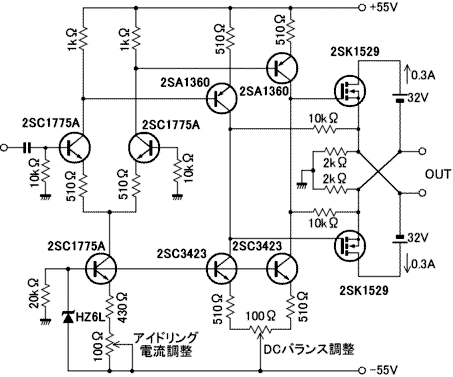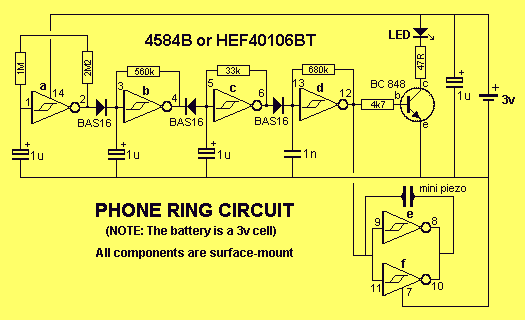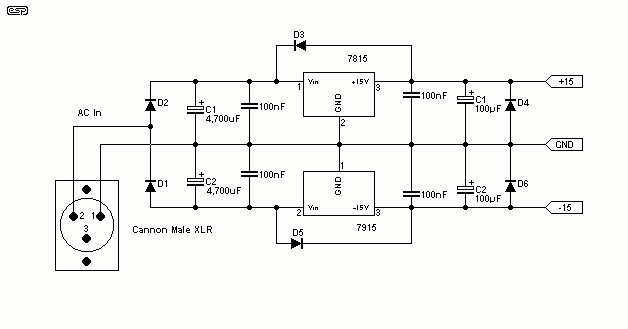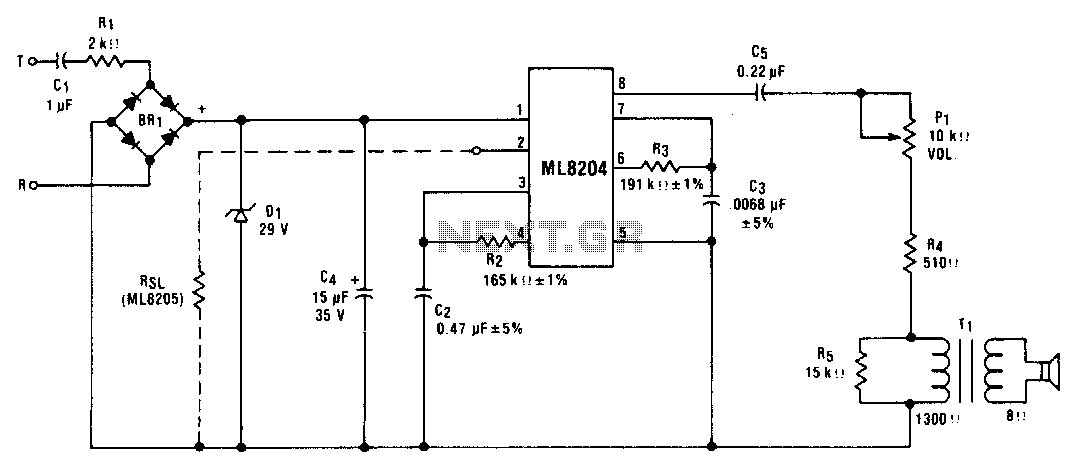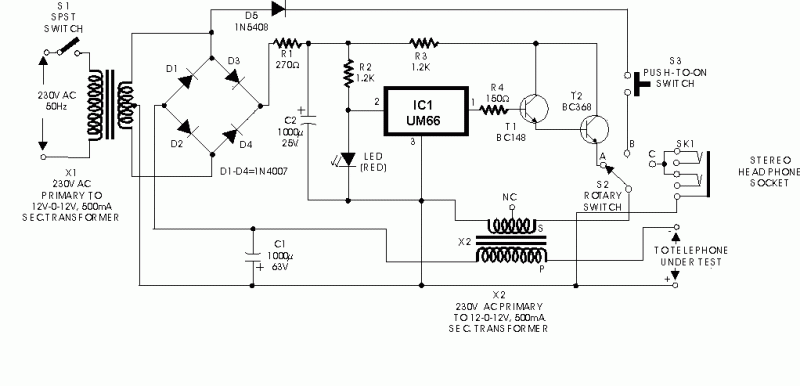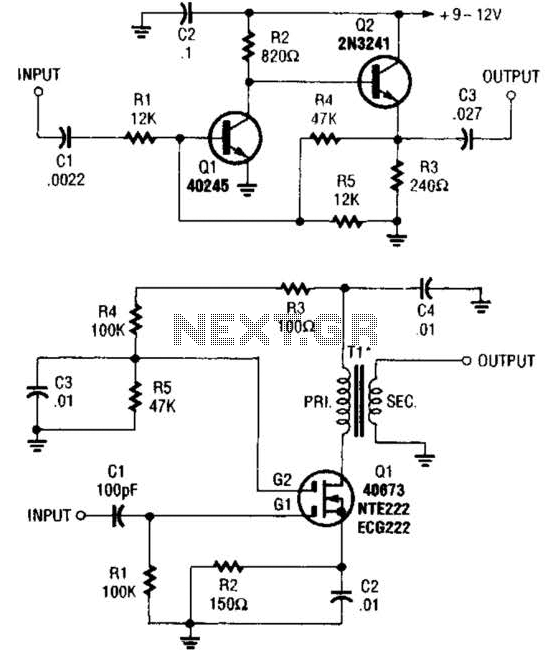
Telephone amplifiers
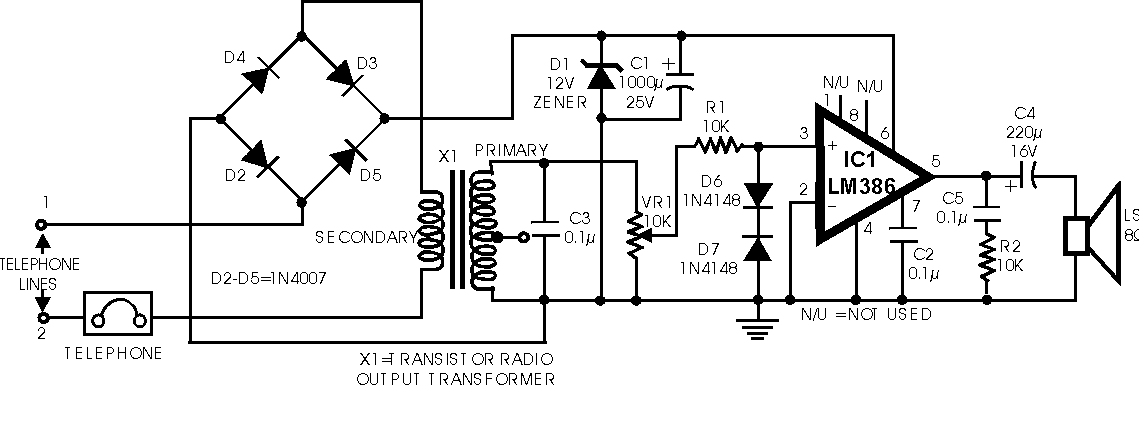
While conversing with a distant subscriber on the telephone, it is common to experience frustration due to faint audio that is barely intelligible. To address this issue, an inexpensive amplifier circuit is proposed. This circuit can be easily assembled and tested without requiring an external power source, as it draws power directly from the telephone line. The amplifier enhances the volume of the telephone conversation, making it audible in a living room setting. A volume control is included to adjust the sound level as needed. The circuit is based on the IC LM386. Diodes D6 and D7 serve to limit the strength of the input signal. Transformer X1, repurposed from a transistor radio's output transformer, is connected in reverse. The original secondary winding is wired in series with the telephone lines, allowing speech signals to alter the magnetic flux in the transformer core, which induces a voltage across the primary winding. This audio signal is then fed into the IC LM386. Diodes D2 through D5 are configured in a bridge to provide a polarity guard, ensuring the amplifier receives the correct polarity regardless of the line's orientation. Zener diode D1 can have a breakdown voltage within the range of 6 to 12 volts. The circuit can be tested by connecting a 6-volt supply to line terminals 1 and 2, resulting in a hissing sound from the loudspeaker. When 6V AC from a transformer is connected to terminals 1 and 2, a hum will be heard in the loudspeaker, with the volume adjustable via potentiometer VR1. Diodes D6 and D7 restrict the input to below ± 700 mV.
The proposed telephone amplifier circuit enhances call clarity by amplifying the audio signal received from the telephone line. The core component, IC LM386, is a low-voltage audio power amplifier capable of delivering up to 1 watt of output power, making it suitable for small audio applications such as this. The design incorporates a simple yet effective volume control mechanism through potentiometer VR1, allowing users to adjust the loudness to their preference.
Diodes D6 and D7 are critical in protecting the circuit from excessive input voltage, ensuring that the signal does not exceed ± 700 mV, which could potentially damage the IC. The use of a transformer, specifically a transistor radio output transformer, is innovative; it allows the circuit to leverage the speech signals' magnetic properties to induce an audio signal. This method efficiently utilizes existing components to create a functional and cost-effective solution.
The bridge configuration of diodes D2 through D5 provides essential polarity protection, allowing the circuit to operate correctly regardless of the orientation of the telephone line connection. This feature is particularly useful in varying installation scenarios where line polarity may not be consistent.
For testing purposes, the circuit can be powered using a 6-volt supply, with audible feedback such as a hissing sound indicating functionality. The introduction of 6V AC allows for further testing of the amplifier's performance through the audible hum, which can be manipulated by adjusting the volume control. This comprehensive design offers a practical solution for improving telephone communication quality, particularly in environments where background noise may hinder clarity.While talking to a distant subscriber on telephone, quite often we feel frustrated when the voice of the distant subscriber is so faint that it is barely intelligible. To overcome the problem, circuit of an inexpensive amplifier is presented here. It can be assembled and tested easily. There is no extra power source needed to power up the circuit, as it draws power from the telephone line itself. The amplifier will provide fairly good volume for the telephone conversation to be properly heard in a living room. A volume control is included to adjust the volume as desired. The circuit is built around IC LM386. Diodes D6 and D7 are used to limit the input signal strength. Transformer X1 is a transistor radio`s output transformer used in reverse. As original secondary (output) winding is connected in series with the telephone lines, the speech signals passing through the lines cause change in the magnetic flux in the core of transformer and thereby induce signal voltage across the primary winding.
This audio signal is used as input for IC LM386. Diodes D2 through D5 connected in bridge configuration constitute a polarity guard so that the amplifier is powered with correct polarity, irrespective of the line polarity, Zener diode D1 may have any breakdown voltage between 6 and 12 volts range. e. The circuit can be easily tested by connecting a 6 volts supply to line terminals 1 and 2. A hissing sound will be heard from the loudspeaker. Now connect 6V AC from a transformer to terminals 1 and 2 and observe hum in the loudspeaker. The volume of the hum can be changed through potentiometer VR1. Diodes D6 and D7 limit the input below ± 700 mV. 🔗 External reference
The proposed telephone amplifier circuit enhances call clarity by amplifying the audio signal received from the telephone line. The core component, IC LM386, is a low-voltage audio power amplifier capable of delivering up to 1 watt of output power, making it suitable for small audio applications such as this. The design incorporates a simple yet effective volume control mechanism through potentiometer VR1, allowing users to adjust the loudness to their preference.
Diodes D6 and D7 are critical in protecting the circuit from excessive input voltage, ensuring that the signal does not exceed ± 700 mV, which could potentially damage the IC. The use of a transformer, specifically a transistor radio output transformer, is innovative; it allows the circuit to leverage the speech signals' magnetic properties to induce an audio signal. This method efficiently utilizes existing components to create a functional and cost-effective solution.
The bridge configuration of diodes D2 through D5 provides essential polarity protection, allowing the circuit to operate correctly regardless of the orientation of the telephone line connection. This feature is particularly useful in varying installation scenarios where line polarity may not be consistent.
For testing purposes, the circuit can be powered using a 6-volt supply, with audible feedback such as a hissing sound indicating functionality. The introduction of 6V AC allows for further testing of the amplifier's performance through the audible hum, which can be manipulated by adjusting the volume control. This comprehensive design offers a practical solution for improving telephone communication quality, particularly in environments where background noise may hinder clarity.While talking to a distant subscriber on telephone, quite often we feel frustrated when the voice of the distant subscriber is so faint that it is barely intelligible. To overcome the problem, circuit of an inexpensive amplifier is presented here. It can be assembled and tested easily. There is no extra power source needed to power up the circuit, as it draws power from the telephone line itself. The amplifier will provide fairly good volume for the telephone conversation to be properly heard in a living room. A volume control is included to adjust the volume as desired. The circuit is built around IC LM386. Diodes D6 and D7 are used to limit the input signal strength. Transformer X1 is a transistor radio`s output transformer used in reverse. As original secondary (output) winding is connected in series with the telephone lines, the speech signals passing through the lines cause change in the magnetic flux in the core of transformer and thereby induce signal voltage across the primary winding.
This audio signal is used as input for IC LM386. Diodes D2 through D5 connected in bridge configuration constitute a polarity guard so that the amplifier is powered with correct polarity, irrespective of the line polarity, Zener diode D1 may have any breakdown voltage between 6 and 12 volts range. e. The circuit can be easily tested by connecting a 6 volts supply to line terminals 1 and 2. A hissing sound will be heard from the loudspeaker. Now connect 6V AC from a transformer to terminals 1 and 2 and observe hum in the loudspeaker. The volume of the hum can be changed through potentiometer VR1. Diodes D6 and D7 limit the input below ± 700 mV. 🔗 External reference
